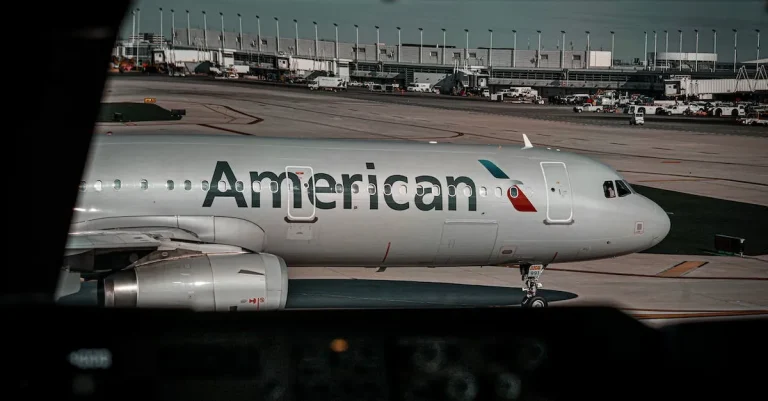How To Write An Unable To Fly Due To Medical Reasons Letter
If you are unable to fly due to a medical condition, you may need to provide documentation from your doctor to the airline. Writing a clear, concise letter can help ensure your request is properly handled. Here’s a quick answer on how to write an unable to fly medical letter:
The letter should be written by your physician on official letterhead and include details on your diagnosis, specific flight restrictions, and duration of these restrictions. You need to provide this letter to the airline, so they can determine if accommodations are possible.
In this comprehensive guide, we will cover everything you need to know about writing an unable to fly medical letter, including essential details to include, formatting, sending it to the airline, and additional tips.
Reasons You May Need an Unable to Fly Letter
If you have a medical condition that prevents you from flying, you may need to provide an “Unable to Fly Due to Medical Reasons” letter to the airline. This letter serves as documentation of your condition and explains why you are unable to travel by air.
There are various medical conditions that may require such a letter, and it is important to understand when and why you might need one.
Medical conditions that warrant a letter
There are several medical conditions that may require an “Unable to Fly” letter. These conditions can range from physical disabilities to mental health issues. Some common examples include:
- Severe heart conditions
- Lung diseases or respiratory conditions
- Recent surgeries or injuries
- Pregnancy complications
- Severe anxiety or panic disorders
- Epilepsy or seizures
- Immunosuppressive disorders
Did you know? According to the Centers for Disease Control and Prevention (CDC), approximately 7.6% of adults in the United States have asthma, a respiratory condition that may impact their ability to fly.
If you have one of these conditions or any other medical condition that makes flying unsafe or uncomfortable, it is important to consult with your healthcare provider to determine if an “Unable to Fly” letter is necessary.
Seeking accommodations or a refund
When you are unable to fly due to a medical condition, you may need to seek accommodations or a refund from the airline. In many cases, airlines have policies in place to assist passengers with medical conditions. However, they often require documentation to support your claim.
By providing an “Unable to Fly” letter, you are providing the airline with the necessary documentation to support your request for accommodations or a refund. This letter should outline your medical condition, explain how it prevents you from flying, and include any supporting medical documentation or recommendations from your healthcare provider.
Pro tip: It is always a good idea to familiarize yourself with the airline’s specific policies regarding medical conditions and accommodations before requesting an “Unable to Fly” letter. This will ensure that you provide all the necessary information and increase your chances of a successful outcome.
Remember, each airline may have different requirements and procedures for requesting accommodations or refunds, so it is important to check their website or contact their customer service for specific instructions.
For more information on traveling with medical conditions, you can visit the Transportation Security Administration (TSA) website or consult with your healthcare provider.
What to Include in an Unable to Fly Medical Letter
Physician’s letterhead and signature
When writing an unable to fly medical letter, it is important to include the physician’s letterhead and signature. This adds credibility and authenticity to the document. The letterhead should contain the doctor’s name, contact information, and any relevant professional affiliations.
The signature should be legible and match the name printed on the letterhead.
Date of letter
The date of the letter is essential for record keeping and verification purposes. It should be clearly stated at the top of the letter. This allows the airline or any other relevant party to identify when the letter was written and ensures that it is up-to-date and valid.
Passenger’s full name and date of birth
It is important to include the full name and date of birth of the passenger for whom the unable to fly letter is being written. This information helps identify the individual and ensures that the letter is specific to them. It is also useful for cross-referencing with any reservations or bookings.
Detailed diagnosis and medical facts
The unable to fly letter should provide a detailed diagnosis and include relevant medical facts. This information helps the airline or other parties understand the specific medical condition or reason why the passenger is unable to fly.
It is important to include any relevant medical reports, test results, or other supporting documents to strengthen the credibility of the letter.
Specific flight restrictions and duration
The unable to fly letter should clearly state any specific flight restrictions that the passenger has due to their medical condition. This may include restrictions on altitude, cabin pressure, or length of the flight.
The letter should also specify the duration of the restrictions, whether they are temporary or permanent, and if any accommodations or assistance are required during travel.
Doctor’s credentials and license number
To further establish the credibility of the unable to fly letter, it is important to include the doctor’s credentials and license number. This information allows the airline or other parties to verify the doctor’s qualifications and ensure that the letter is legitimate.
It is a good practice to include the doctor’s medical specialty or area of expertise, as it adds to their authority in the matter.
Formatting the Letter
When writing an “Unable to Fly Due to Medical Reasons” letter, it is important to pay attention to the formatting. A well-formatted letter not only looks professional but also conveys your message effectively. Here are some key aspects to consider when formatting your letter:
Business formal format
Your letter should follow a business formal format, which means using a professional tone and adhering to standard business letter guidelines. Begin with your contact information, followed by the recipient’s contact information, the date, and a formal salutation.
Use a clear and concise language throughout the letter.
Typed, error-free, easy to read
Ensure that your letter is typed and free from any spelling or grammatical errors. A well-written and error-free letter shows your attention to detail and professionalism. Use a legible font and appropriate font size to make your letter easy to read.
Remember to proofread your letter before sending it to avoid any mistakes.
1-2 pages maximum
Keep your letter concise and to the point. Ideally, an “Unable to Fly Due to Medical Reasons” letter should be no more than one to two pages long. Summarize your medical condition and its impact on your ability to travel in a clear and concise manner.
Avoid including unnecessary details that may detract from the main purpose of the letter.
For more information on business letter formatting, you can visit reputable websites such as The Balance Careers or Purdue Global.
Sending the Letter to the Airline
Once you have written your “Unable to Fly Due to Medical Reasons” letter, it’s important to know how to send it to the airline. Here are some key steps to follow:
Send as early as possible before travel
It’s crucial to send your letter to the airline as early as possible before your scheduled travel date. This will give the airline sufficient time to review your request and make any necessary arrangements.
Aim to send your letter at least a few weeks in advance, especially if you need special accommodations or assistance.
Include passenger flight details
When sending your letter, make sure to include all relevant passenger flight details. This includes your full name, booking reference or ticket number, departure and arrival airports, and the date of travel.
Providing these details will help the airline identify your booking and process your request more efficiently.
Send through customer service channels
It’s best to send your letter through the airline’s official customer service channels. This can typically be done via email or by submitting a form on their website. Check the airline’s website for specific instructions on how to contact their customer service department.
Sending your letter through official channels ensures that it reaches the right department and is handled appropriately.
Follow up with a phone call
After sending your letter, it’s a good idea to follow up with a phone call to the airline’s customer service department. This will allow you to confirm that they have received your letter and discuss any additional details or special arrangements you may require.
Be polite and patient when speaking with the customer service representative, as they are there to assist you.
Remember, each airline may have specific guidelines and procedures for handling letters regarding inability to fly due to medical reasons. Always refer to their website or contact their customer service for the most accurate and up-to-date information.
What Happens Next with the Airline
Once you have submitted your “Unable to Fly Due to Medical Reasons” letter to the airline, the next step is for the airline to review your request. The airline will evaluate the information provided in your letter, including any supporting documentation or medical certificates.
They will assess whether your medical condition falls under their guidelines for accommodating passengers with disabilities or medical restrictions.
The airline reviews the request
The airline’s review process typically involves their medical department or a designated team that specializes in handling medical-related requests. They will carefully consider your situation and determine if they can accommodate your specific needs.
This may include making adjustments to your seating arrangements, providing additional assistance during the flight, or allowing you to bring necessary medical equipment on board.
It’s important to note that each airline has its own policies and procedures when it comes to accommodating passengers with medical restrictions. Some airlines may have more flexible guidelines, while others may have stricter limitations.
It’s always a good idea to check the airline’s website or contact their customer service directly to understand their specific requirements and processes.
Options if restrictions can be accommodated
If the airline determines that they can accommodate your medical restrictions, they will typically provide you with options to proceed. These options may include:
- Rebooking your flight on a different date or time that suits your medical needs
- Assigning you a seat with additional legroom or closer proximity to restrooms
- Arranging for wheelchair assistance or other necessary accommodations at the airport
It’s important to communicate your preferences and requirements clearly to the airline, so they can make the necessary arrangements for your travel. Remember to provide any relevant medical documentation or certificates that support your request.
Refund eligibility if flight is cancelled
If your flight is ultimately cancelled due to your medical condition, the airline will typically have a refund policy in place. The refund eligibility may vary depending on the type of ticket you purchased, the airline’s policies, and the circumstances surrounding the cancellation.
It’s recommended to review the airline’s refund policy or contact their customer service for specific details. In some cases, you may be eligible for a full refund or a partial refund depending on the circumstances.
Keep in mind that airlines may have certain timeframes or deadlines for claiming a refund, so it’s important to act promptly if your flight is cancelled.
For more information on airline policies and procedures regarding passengers with medical restrictions, you can visit the International Air Transport Association (IATA) website. They provide valuable resources and guidelines for airlines to ensure the well-being and safety of passengers with medical conditions.
Conclusion
Writing an unable to fly medical letter is key for notifying airlines about flight restrictions due to health issues. With your doctor’s detailed input and clearly presenting this information early on, airlines can better handle these accommodation requests.
Just remember that essential details, proper formatting, and prompt delivery of your letter can make a big difference. This ensures the best possible outcome so you avoid issues when travelling.








